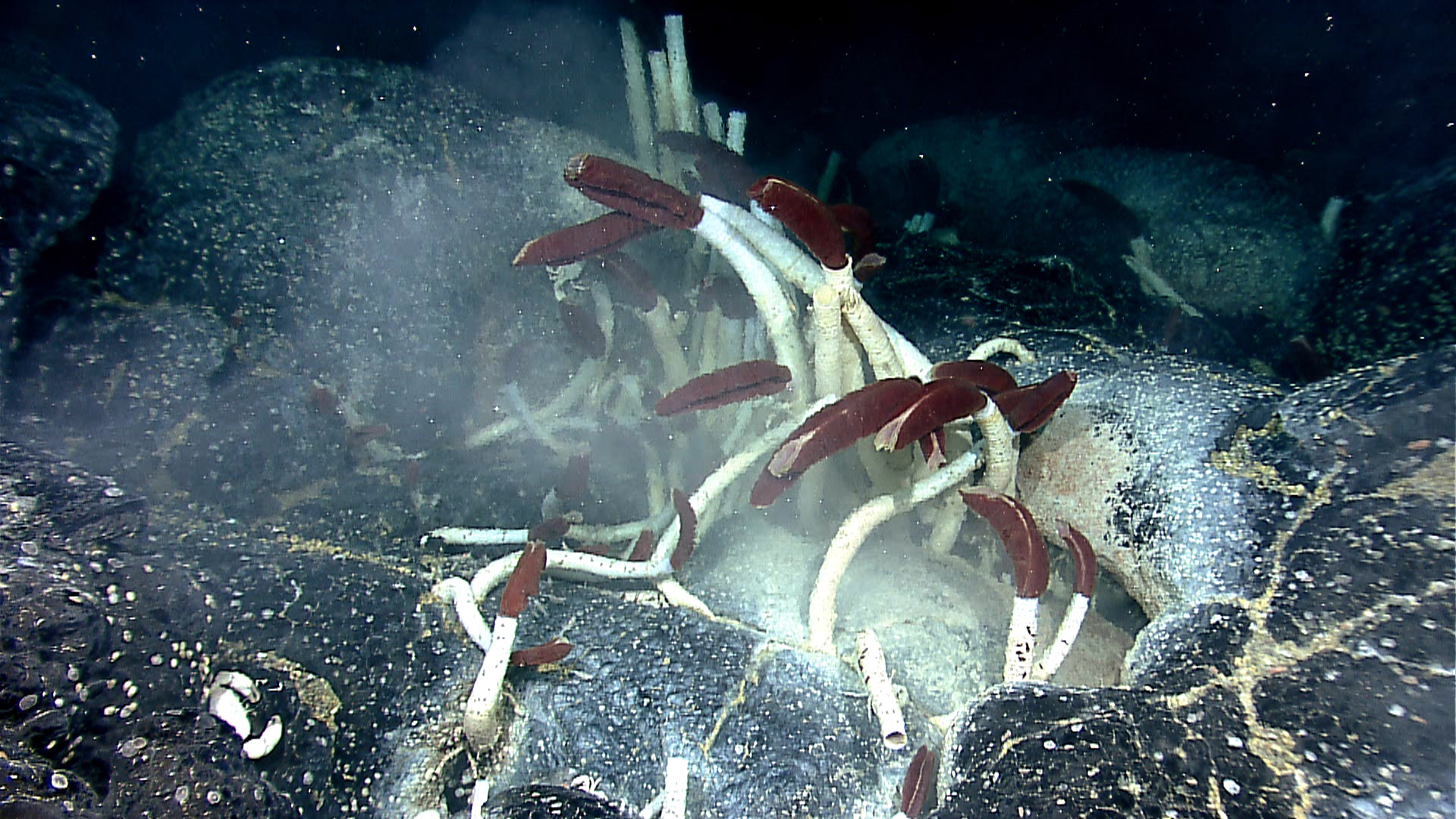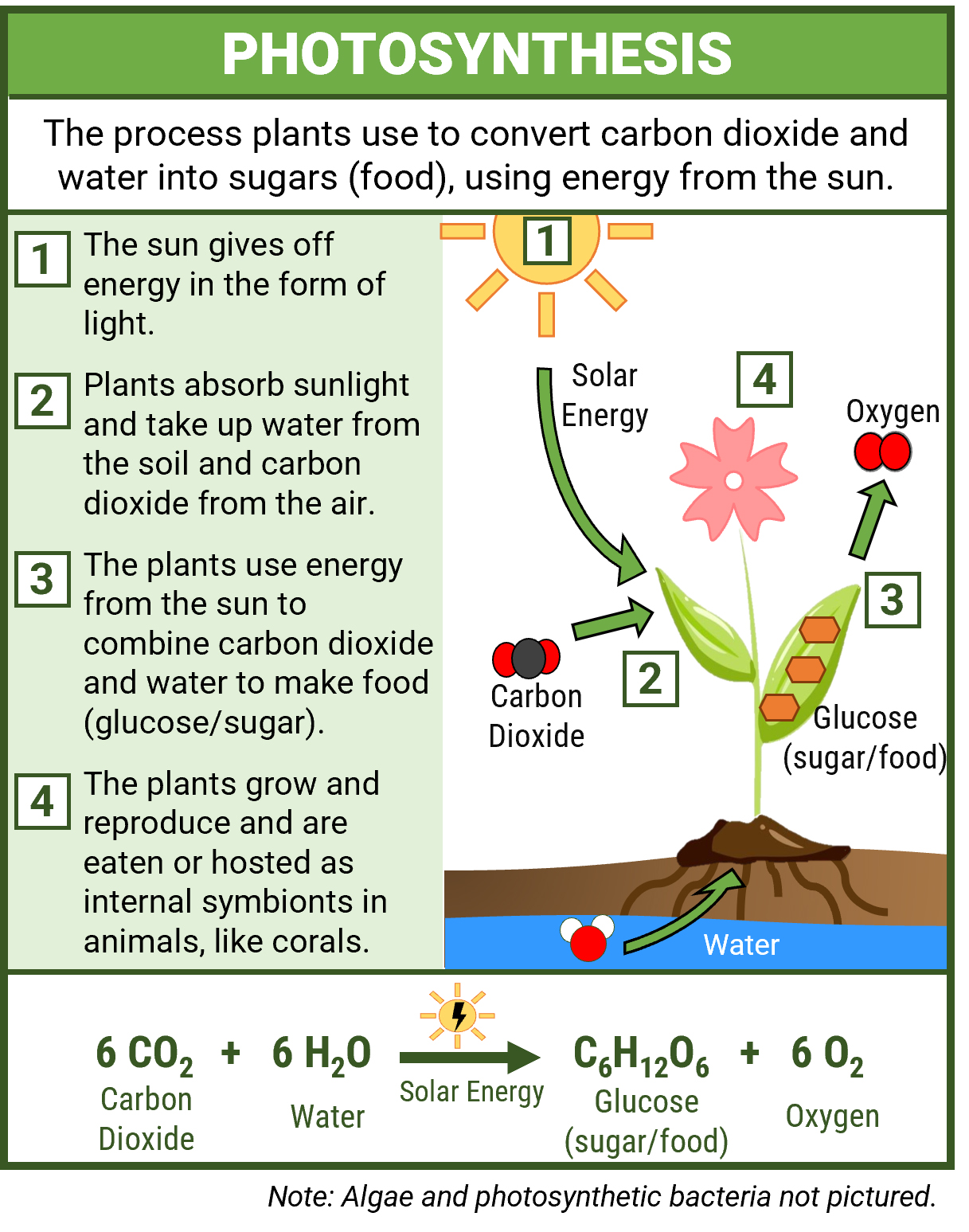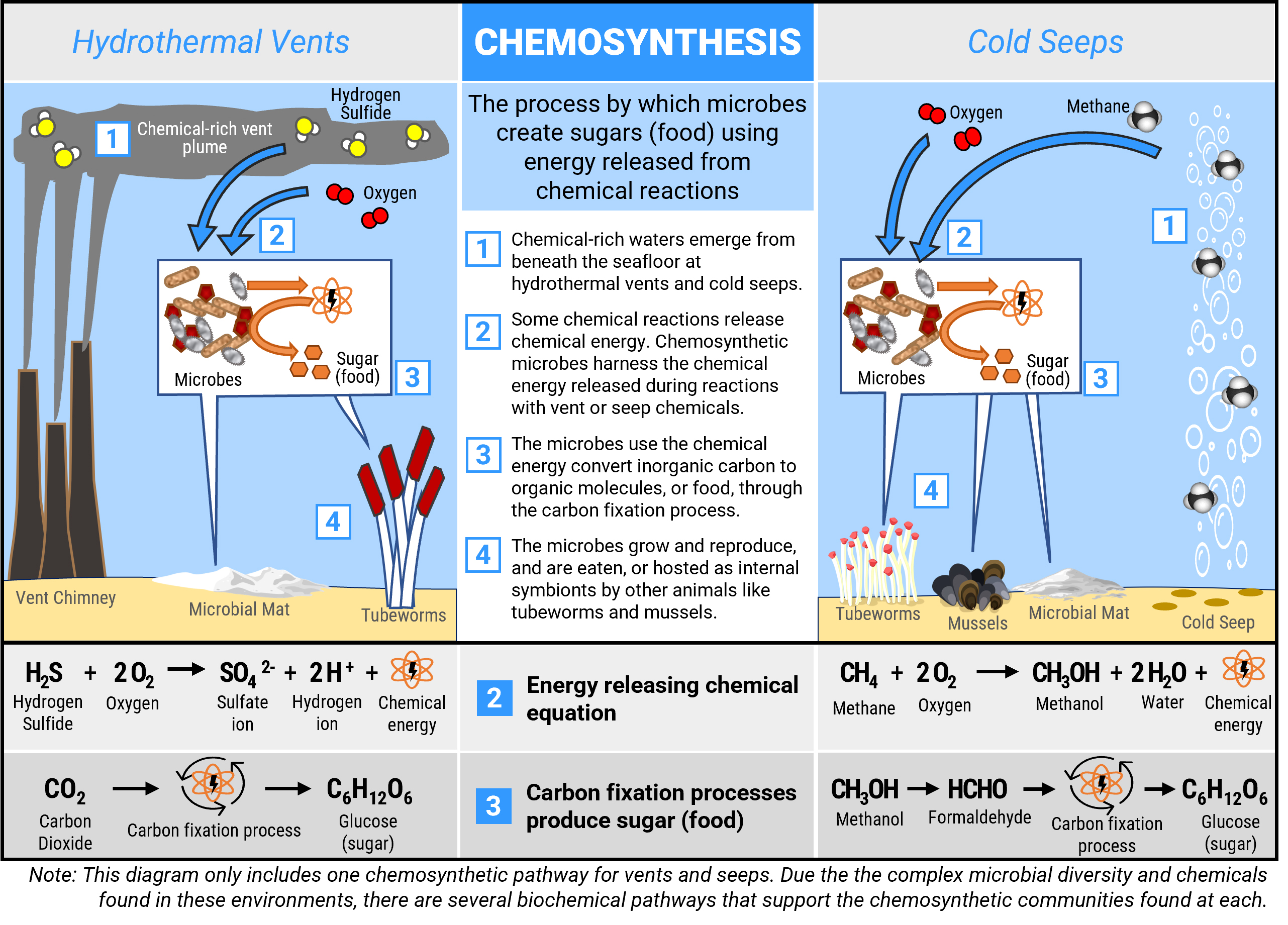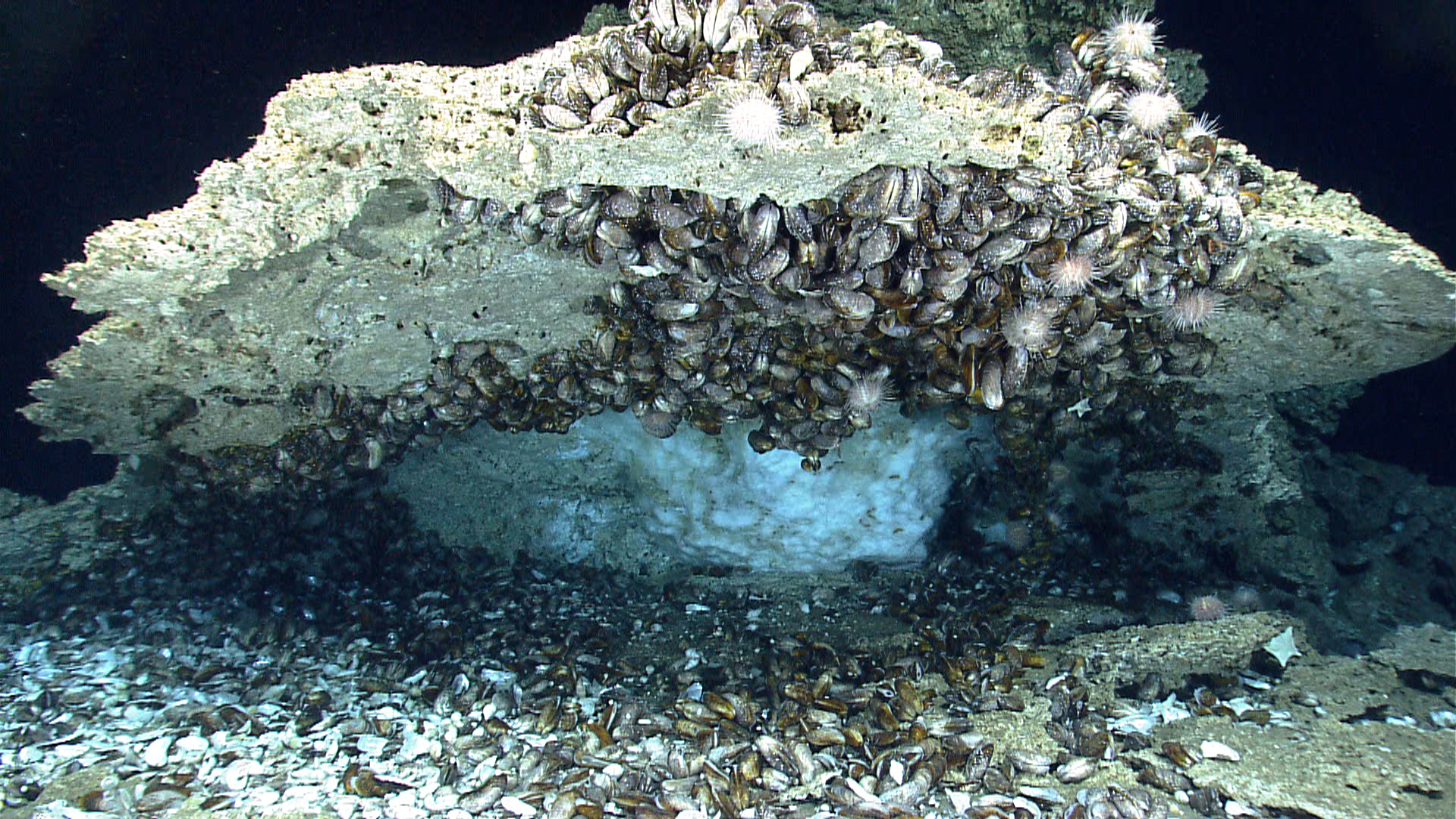Topic
Cold Seeps

Chemosynthesis Fact Sheet
Chemosynthesis is the process by which food is made by bacteria or other living things using chemicals as the energy source, typically in the absence of sunlight.
Solar Powered World
The majority of life on the planet is based in a food chain which revolves around sunlight. Plants, algae and photosynthetic bacteria use solar energy to turn carbon dioxide and water into sugar and oxygen through the process of photosynthesis. Photosynthesis is possible in any ecosystem that gets sufficient sunlight–on land, in shallow water, even inside and below clear ice.
In the deep ocean, however, there is no light. Yet, ocean research expeditions to hydrothermal vents and cold seep sites have revealed dense oases of life. Here, instead of sunlight being the primary form of energy, chemical energy is used in a process called chemosynthesis.

Alternative Energy for Deep-Sea Ecosystems
Chemosynthesis was first observed as the basis of a food web in 1977 during an ocean research expedition near the Galápagos Islands. There, explorers observed hydrothermal vents on the ocean floor spewing a chemical soup of hot fluid along with thriving communities of giant tubeworms. Surrounding these hydrothermal vents was a community of several new animal species—thriving despite living in total darkness with no access to sunlight! These incredible communities have since been found at hydrothermal vent fields and at cold seep sites around the globe.
Chemosynthetic microbes, like bacteria and archaea, form the base of food webs at hydrothermal vents and cold seeps. Instead of photosynthesis, these organisms use chemosynthesis, the process of creating sugars (food) using energy released from chemical reactions. Unlike photosynthesis, there is not one chemical pathway that defines chemosynthesis. Different chemosynthetic microbe species live at hydrothermal vent and cold seep communities, each using different pathways to harness energy from the chemical-rich waters emerging from these seafloor features.
Hydrogen sulfide (H2S) is abundant in the extremely hot water erupting from hydrothermal vents, while methane (CH4), is common in the fluids percolating up ant out of the seafloor at cold seep sites. The diagram on the next page demonstrates how chemosynthetic microbes harness energy released by reactions with these chemicals and use it to drive carbon fixation processes that convert inorganic carbon into sugar/food (C6H12O2 ).

More About Chemical Equations for Chemosynthesis
Why is Chemosynthesis Important?
In a world without access to the Sun’s energy, chemosynthesis provides the basis for the development of rich, diverse communities. Chemosynthetic deep-sea bacteria form the base of a food web that includes a significant variety of marine life including shrimp, tubeworms, clams, crabs, fish, and octopods, just to name a few.
The equations for chemosynthesis in the diagram above represent one process that has been separated into two chemical reactions in order to visualize the two major steps – producing chemical energy and using the chemical energy to produce food in the form of a carbohydrate. This complex process can also be written as the single chemical reaction [below] for a more direct comparison to photosynthesis, only focusing on the primary reactants and final products.
CO2 + 4H2S + O2 –> CH2O + 4S + 3H2O

